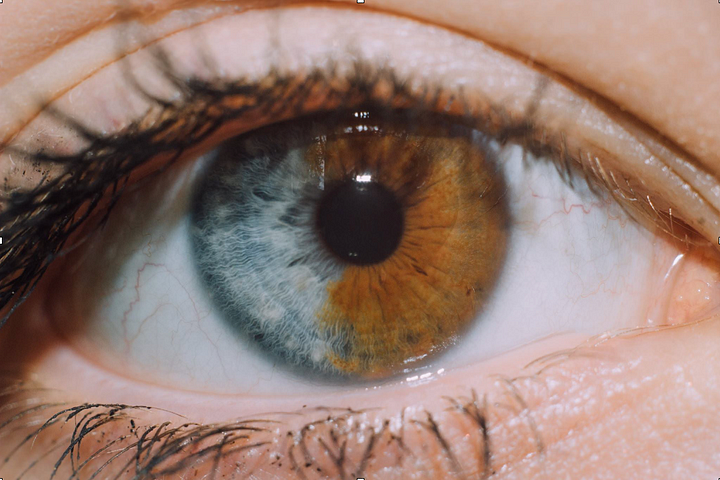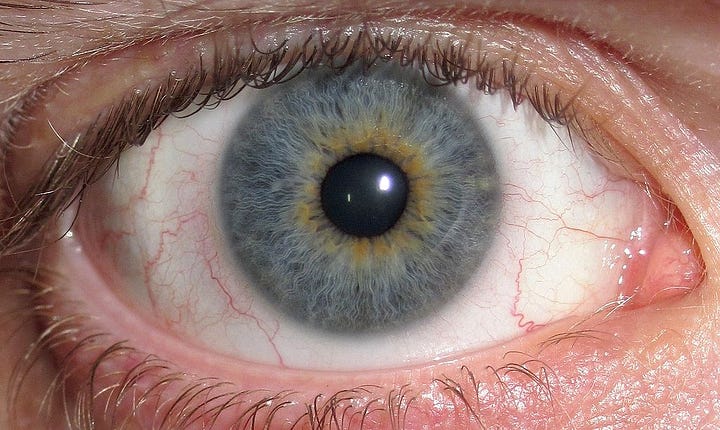 |
Photo by Karl Fredrickson on Unsplash |
The world is filled with amazing phenomena that catch our attention in a glimpse despite the wide range of people’s differences.
One of these is heterochromia iridium, where someone’s eyes are different colors. Let’s take a closer look at this fascinating topic, figuring out why it happens, and what causes it.
Two Colors, One Eye
Heterochromia iridium, more commonly known as heterochromia, is a captivating condition where a person has two different eye colors or many colors in one eye.
Hetero = Different
Chromia = Color
Iridium = Iris
This condition is more common in animals and much less in humans. It affects only about 1% of the world's population.
What Determines Your Eye Color?
Let’s go back a step to understanding how your eye color is determined.
In the past, it was thought that the brown color trait was dominant to all other colors, meaning that if you have brown eyes and your wife has, let’s say, green eyes then you are going to have brown-eyed children simply because brown is dominant and green is recessive.
However, this is not entirely true. Your eye color is more complicated than that, multiple genes determine it.
The colored part of your eyes is called The Iris. This part has a type of cells called melanocytes which are responsible for producing a pigment called Melanin.
Two main factors determine your eye color:
1- The amount of Melanin in the Iris
2- The way it scatters and reflects light.
For example, brown eyes have more melanin, while blue eyes have less.
Additionally, other factors such as genetics, environmental influences, and random mutations can also play a role in determining an individual’s eye color.
Heterochromia Symptoms
As you might have guessed by now, there are no symptoms of Heterochromia, you just look in the mirror and you will notice extra colors in your eyes.
Types of Heterochromia
There are several types of heterochromia:
1- Complete Heterochromia
This type is when your eyes are completely different in color, just like this picture:

2- Segmental Heterochromia
This is when your eye has more than one color:

3- Central heterochromia
This is when your pupil is surrounded with a ring of a different color than the rest of your iris:

4- Acquired Heterochromia
A lot of people claim that when they were children, they had different eye colors and they are right. When you develop differently colored eyes later in life after infancy, this is another type of Heterochromia that is acquired.
What Causes Acquired Heterochromia
Heterochromia may occur due to genetic inheritance, acquired conditions, or health issues. Genetic factors involve mutations in genes controlling melanin production.
Here are some of the causes of Acquired Heterochromia:
1- Eye injury
2- Glaucoma
3- Neuroblastoma
4- Eye cancer
5- Pigment dispersion syndrome
6- Ocular melanosis
7- Posner-Schlossman syndrome
8- Iris ectropion syndrome
Diagnosis and Treatment
It is diagnosed by thorough eye checkups, usually done by ophthalmologists or optometrists. This includes tests to check how well you can see and also checking your iris.
Treatment options depend on what’s causing the problem and what you prefer. Sometimes, you might not need any treatment. But if you do, you could try colored contact lenses or surgeries to fix how your eyes look or to deal with any related health problems.
Heterochromia iridium shows how unique we can be because of our genes. It’s fascinating to see how it affects how we look and how it can relate to our health.
